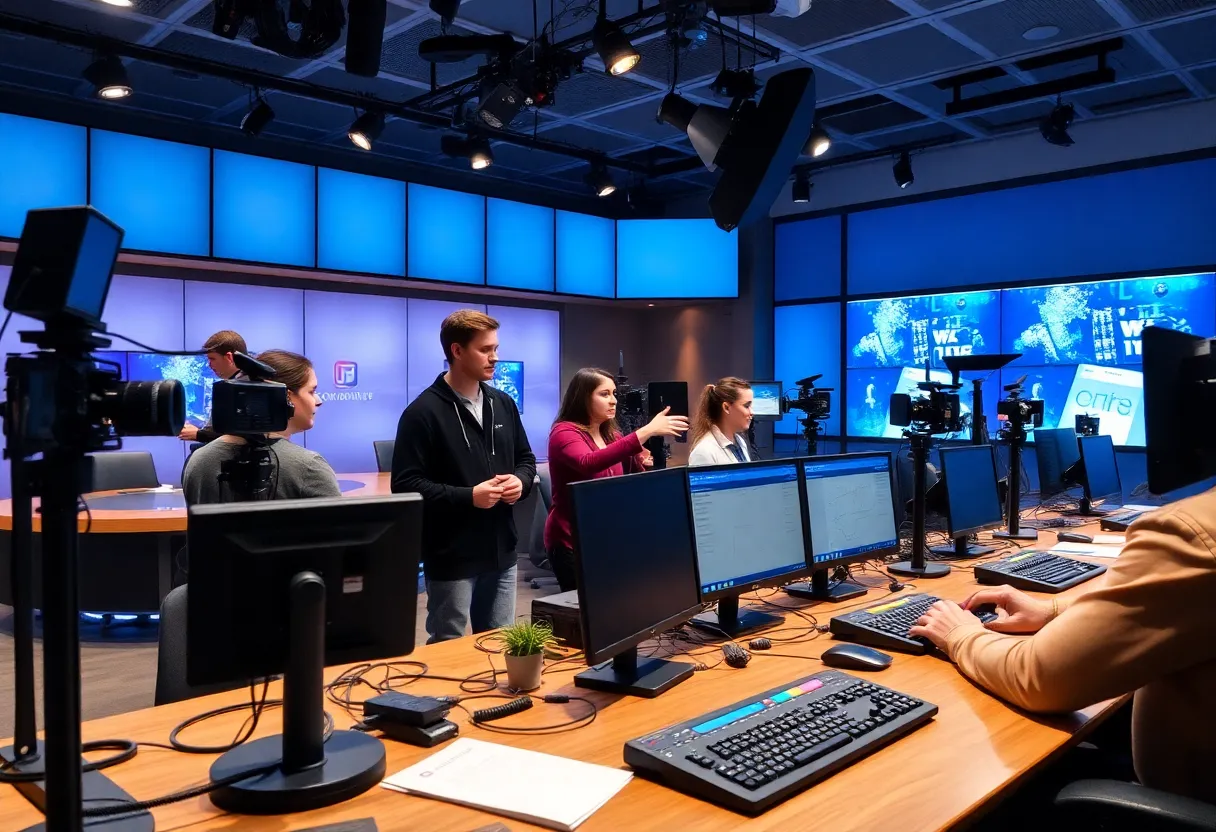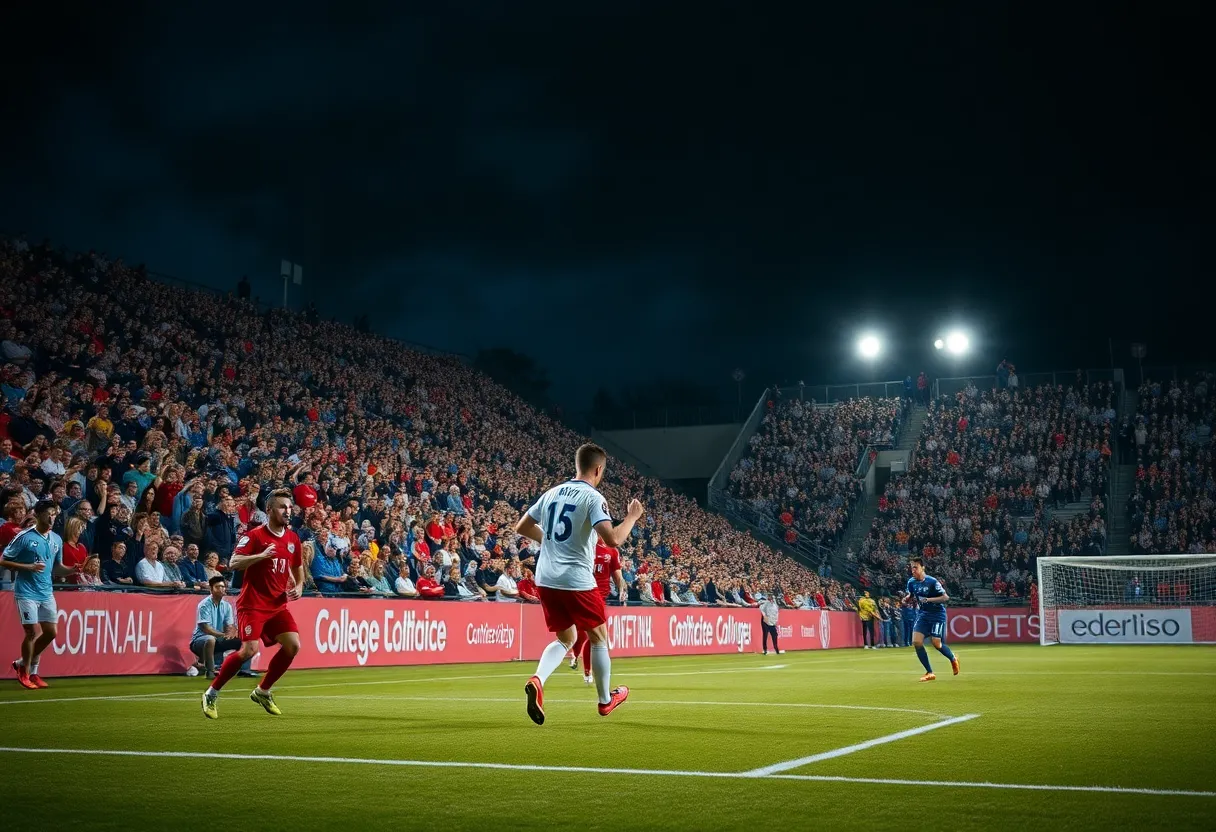Tucson, October 17, 2025
The University of Arizona’s broadcast department in Tucson has upgraded its facilities by installing advanced Riedel intercom systems. This enhancement is designed to improve production quality and facilitate seamless communication during student-led live events. The new technology is expected to enhance collaboration between students and faculty while preparing graduates for careers in the evolving media industry. This upgrade highlights UArizona’s commitment to staying ahead of industry standards and providing hands-on experience with professional tools.
Tucson, AZ Broadcast Upgrade: UArizona Enhances Facilities with Riedel Intercom Systems
In Tucson, AZ, the University of Arizona’s broadcast department completed an upgrade to its facilities on October 17, 2025, by installing advanced Riedel intercom systems. This enhancement aims to improve production quality for student-led shows, allowing for better communication and efficiency during live events.
The new systems are designed to support seamless collaboration among students and faculty, which is expected to enhance the overall experience of producing broadcasts. This upgrade represents a key step in modernizing the department’s capabilities, directly benefiting educational outcomes by preparing students for careers in the media industry.
Key aspects of the upgrade include the integration of Riedel technology to handle real-time communications, which helps in managing complex productions more effectively. Faculty members have noted that this technology addresses common challenges in live broadcasting, such as coordination issues, thereby streamlining operations.
The implementation of these systems is part of broader efforts to keep pace with evolving industry standards. In the media sector, advanced intercom solutions like those from Riedel are increasingly essential for high-quality productions, from news broadcasts to entertainment events. At UArizona, this upgrade ensures that students gain hands-on experience with tools commonly used in professional settings.
The broadcast department at the University of Arizona has a history of focusing on practical training, offering courses and projects that simulate real-world scenarios. This latest enhancement builds on previous investments in technology, reflecting a commitment to adapting to changes in the field. The Riedel systems specifically provide features like wireless connectivity and user-friendly interfaces, which are vital for dynamic production environments.
As the media industry continues to evolve with digital advancements, such upgrades help bridge the gap between academic learning and professional practice. For instance, the ability to handle multiple audio channels simultaneously can improve the quality of student-led shows, giving participants a competitive edge in job markets. This development in Tucson is indicative of how educational institutions are responding to technological trends to better equip their students.
The upgrade process involved evaluating current needs and selecting equipment that aligns with the department’s goals. Riedel intercom systems were chosen for their reliability and compatibility with existing setups, ensuring a smooth transition. This decision was informed by the department’s ongoing assessment of tools that can enhance learning outcomes.
Students involved in broadcast programs will now have access to features that facilitate teamwork, such as instant communication across different production roles. This not only improves the technical aspects of their work but also fosters a collaborative atmosphere, which is crucial in media careers. The broader impact includes preparing graduates to enter an industry where adaptability and technical proficiency are highly valued.
In summary, the October 17 upgrade at UArizona’s broadcast department in Tucson marks a significant advancement in educational broadcasting. By focusing on improved production quality and collaboration, this initiative supports the development of future media professionals in a rapidly changing field.
Background on the Upgrade
The University of Arizona, located in Tucson, has long been a hub for media education in the region. The broadcast department offers a range of programs that emphasize both theoretical knowledge and practical skills. Recent years have seen an increase in demand for high-tech training due to the growth of digital media platforms.
This upgrade follows industry-wide trends where advanced communication tools are becoming standard. Riedel intercom systems are known for their durability and efficiency, making them a popular choice for educational and professional use. The department’s decision to adopt this technology underscores the importance of staying current with innovations that affect broadcasting workflows.
Overall, this development highlights how investments in technology can enhance learning experiences. By equipping students with state-of-the-art tools, UArizona is positioning itself as a leader in media education within Arizona and beyond.
To provide more context, the Riedel systems include components that allow for scalable setups, meaning they can grow with the department’s needs. This flexibility is particularly useful for handling various types of productions, from small-scale student projects to larger events. Additionally, the systems’ design helps in reducing errors during live broadcasts, which is a common issue in educational settings.
Faculty have emphasized the role of such technologies in teaching real-time problem-solving, a skill that is directly transferable to professional environments. As the media landscape shifts towards more integrated digital solutions, exposure to tools like these prepares students for diverse career paths, including roles in television, radio, and online content creation.
In Tucson, this upgrade aligns with local efforts to promote innovation in education. The University of Arizona’s commitment to updating its facilities reflects a broader strategy to maintain high standards in broadcasting education, ensuring that graduates are well-prepared for the demands of the industry.
Furthermore, the installation process involved collaboration between department staff and technical experts, demonstrating the interdisciplinary approach often required in modern media production. This hands-on experience for students extends beyond the classroom, offering insights into the logistical aspects of upgrading broadcast systems.
As a result, the enhanced facilities are expected to support a wider array of projects, potentially increasing student participation and output quality. This could lead to more opportunities for students to showcase their work, both locally and nationally, thereby boosting their portfolios and career prospects.
The upgrade also considers future technological advancements, with the systems being compatible with emerging standards. This forward-thinking approach ensures that the department remains at the forefront of broadcasting education for years to come.
FAQ Section
Frequently Asked Questions
Q1: What upgrade occurred in the UArizona broadcast department?
A1: The UArizona broadcast department upgraded its facilities with advanced Riedel intercom systems today, improving production quality for student-led shows.
Q2: How does the upgrade benefit students?
A2: The technology enables seamless collaboration during live events, preparing students for professional media careers in an evolving industry.
Q3: When and where did the upgrade take place?
A3: The upgrade took place in Tucson, AZ on October 17, 2025.
Q4: What is the purpose of the Riedel intercom systems?
A4: The systems improve production quality for student-led shows and facilitate better communication in the broadcast department.
Key Features Chart
| Feature | Description |
|---|---|
| Improved Production Quality | Enhances audio and communication clarity for student-led shows, reducing errors in live events. |
| Seamless Collaboration | Allows for real-time interaction among team members, facilitating better coordination during broadcasts. |
| Preparation for Careers | Provides hands-on experience with professional tools, readying students for the evolving media industry. |
| Wireless Connectivity | Offers flexible setup options, enabling mobility and adaptability in production environments. |




